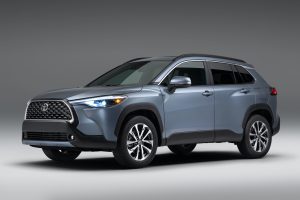In recent years, there has been a noticeable shift in the types of vehicles on the road. According to David Zipper of the MIT Mobility Initiative, over 80% of new vehicles sold today are SUVs and pickup trucks1. This market-driven phenomenon, known as “car bloat,” refers to the trend of cars getting larger and heavier over time1. While this may seem like a matter of personal preference, the environmental and safety costs associated with car bloat can be substantial1. In this article, we will delve into the implications of car bloat, exploring its impact on safety and the environment. We will also discuss the concept of market failure and potential solutions to address this issue.

The Evolution of Car Bloat
The roots of car bloat can be traced back to the late 1970s when AMC repositioned the Jeep as a modern SUV for suburban and urban shoppers1. This move laid the foundation for the rise of SUVs as the most popular vehicle type today1. The classification of SUVs as light trucks by the federal government, with more relaxed fuel-economy standards than passenger vehicles, further contributed to the proliferation of these larger vehicles1.
Safety Implications
One of the most significant concerns associated with car bloat is its impact on safety1. As vehicles become taller and heavier, they exert more force in the event of a crash, posing a greater risk to smaller cars and their occupants1. The rise in SUVs and pickups has coincided with a 40-year high in pedestrian and cyclist deaths in the United States1. The disparity in size and weight between larger vehicles and vulnerable road users exacerbates the potential for severe injuries and fatalities in accidents involving car bloat1.

Environmental Consequences
Car bloat also has detrimental effects on the environment. Larger and heavier cars require more power to move, leading to increased power consumption and higher levels of pollution1. Gasoline-powered SUVs and trucks, in particular, emit more pollutants due to their higher fuel consumption1. Additionally, the weight and size of these vehicles contribute to accelerated tire erosion, resulting in tire pollution that can harm wildlife and ecosystems1.
Market Failure and Societal Costs
The prevalence of car bloat can be attributed to a market failure, where the societal costs of owning and operating large vehicles are not adequately accounted for1. Individuals who choose to purchase enormous, heavy cars do not bear the full extent of the environmental and safety consequences associated with their choices1. This imbalance undermines the efficiency of the automobile market and calls for a more comprehensive consideration of the societal costs when making purchasing decisions1.
Government Influence and Policy Solutions
While the American automobile market operates within the framework of government regulations, there is still room for improvement in addressing the issue of car bloat1. One example of government influence is the implementation of higher vehicle registration fees for heavier SUVs and trucks1. The District of Columbia, for instance, requires owners of the most heavy-duty vehicles to pay significantly higher registration fees compared to those with smaller sedans1. Such policies aim to reflect the higher societal costs associated with larger and more dangerous models, promoting a more balanced market1.
Promoting Awareness and Education
In addition to policy interventions, raising awareness and promoting education about the impact of car bloat is crucial1. Consumers need to understand the environmental and safety consequences of their vehicle choices and consider the societal costs when making purchasing decisions1. This can be achieved through public campaigns, educational initiatives, and the dissemination of accurate information about the implications of car bloat.

Innovation and Technological Solutions
Advancements in technology can also play a significant role in addressing the challenges posed by car bloat. The development of more fuel-efficient engines and alternative propulsion systems can help mitigate the environmental impact of larger vehicles1. Additionally, the integration of advanced safety features, such as collision avoidance systems and pedestrian detection, can enhance the safety of both occupants and vulnerable road users1.
The Role of Automakers and Industry Leadership
Automakers and industry leaders have a pivotal role to play in tackling car bloat. By prioritizing the production of smaller, more fuel-efficient vehicles and investing in research and development of sustainable technologies, they can contribute to a more sustainable and safer automotive landscape1. Emphasizing the importance of safety and environmental considerations in marketing campaigns can also help shift consumer preferences towards more responsible choices.
The Future of Car Bloat
As discussions surrounding climate change intensify and safety concerns persist, the future of car bloat remains uncertain. The need for a more balanced market that accounts for the societal costs of larger vehicles is evident1. Government regulations, public awareness campaigns, technological innovations, and the active participation of automakers can all contribute to a future where safety and environmental considerations are at the forefront of automotive decision-making.
Conclusion
Car bloat, characterized by the increasing size and weight of vehicles, has significant implications for safety and the environment. The rise of SUVs and pickups has brought about a range of challenges, including increased risks for smaller cars, higher levels of pollution, and accelerated tire erosion. Addressing these issues requires a multifaceted approach that includes government intervention, public awareness, technological advancements, and industry leadership. By recognizing the societal costs associated with car bloat and taking proactive measures, we can create a more sustainable and safer automotive landscape for the future.




No comments! Be the first commenter?